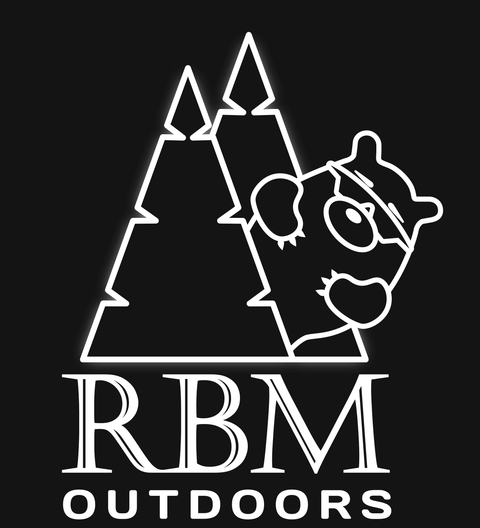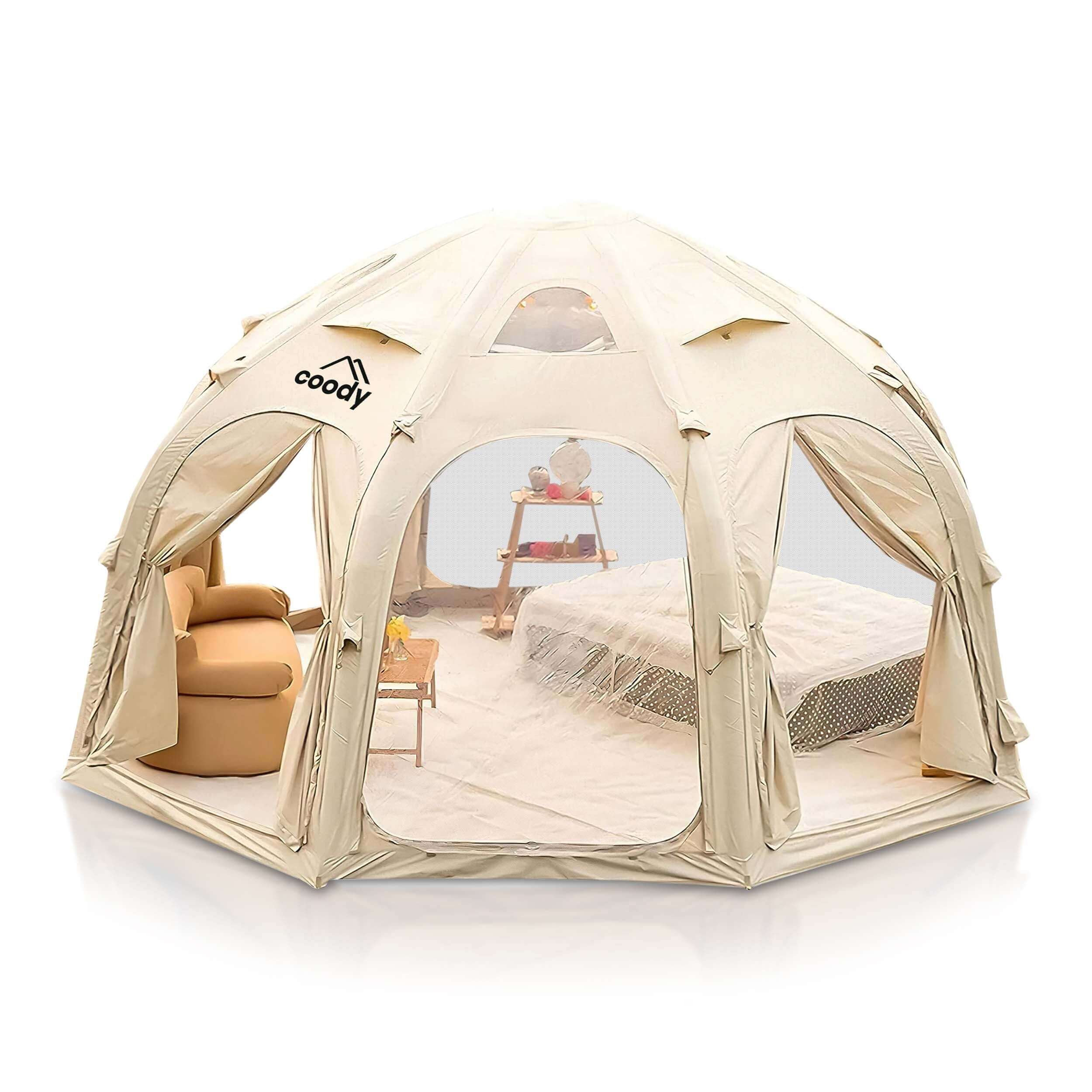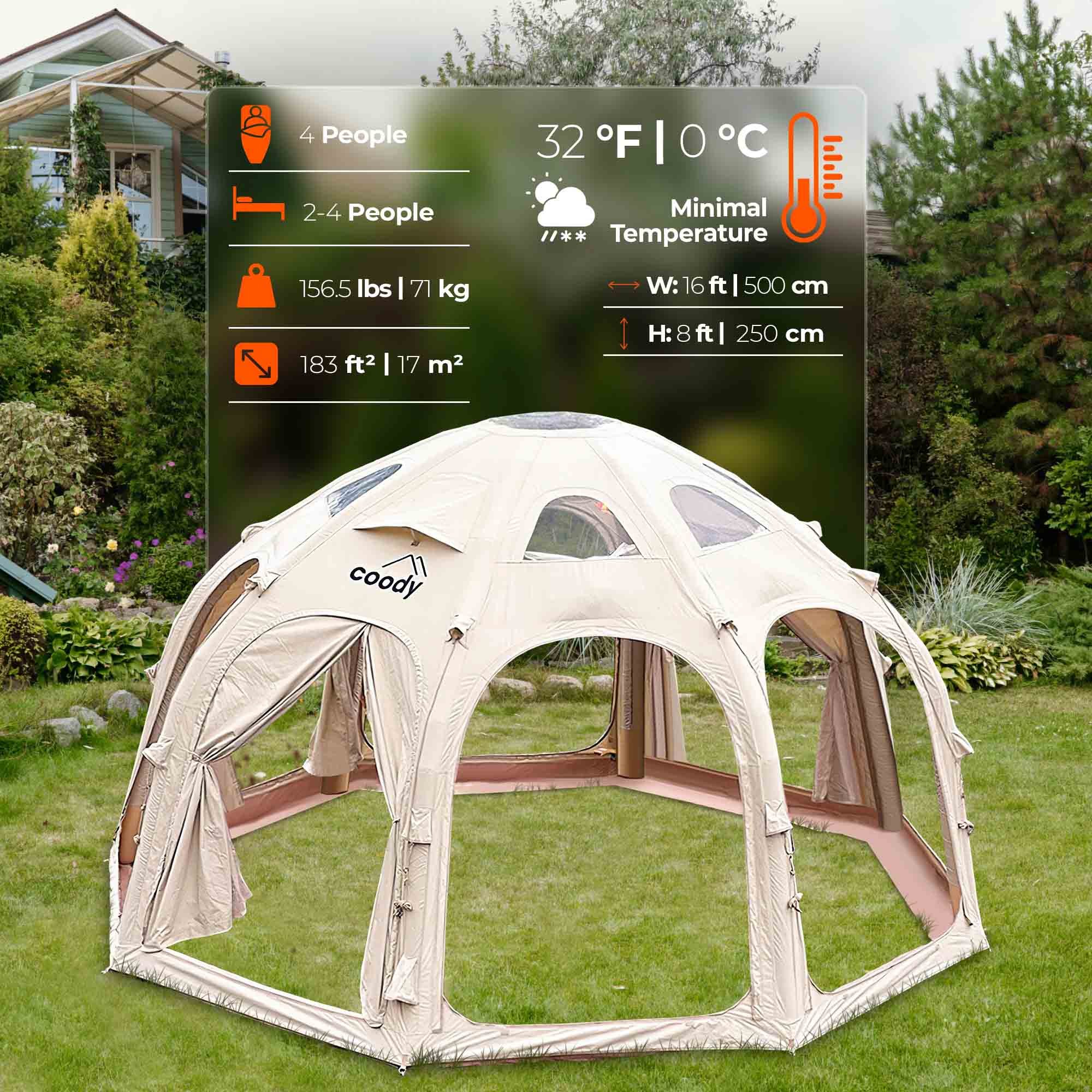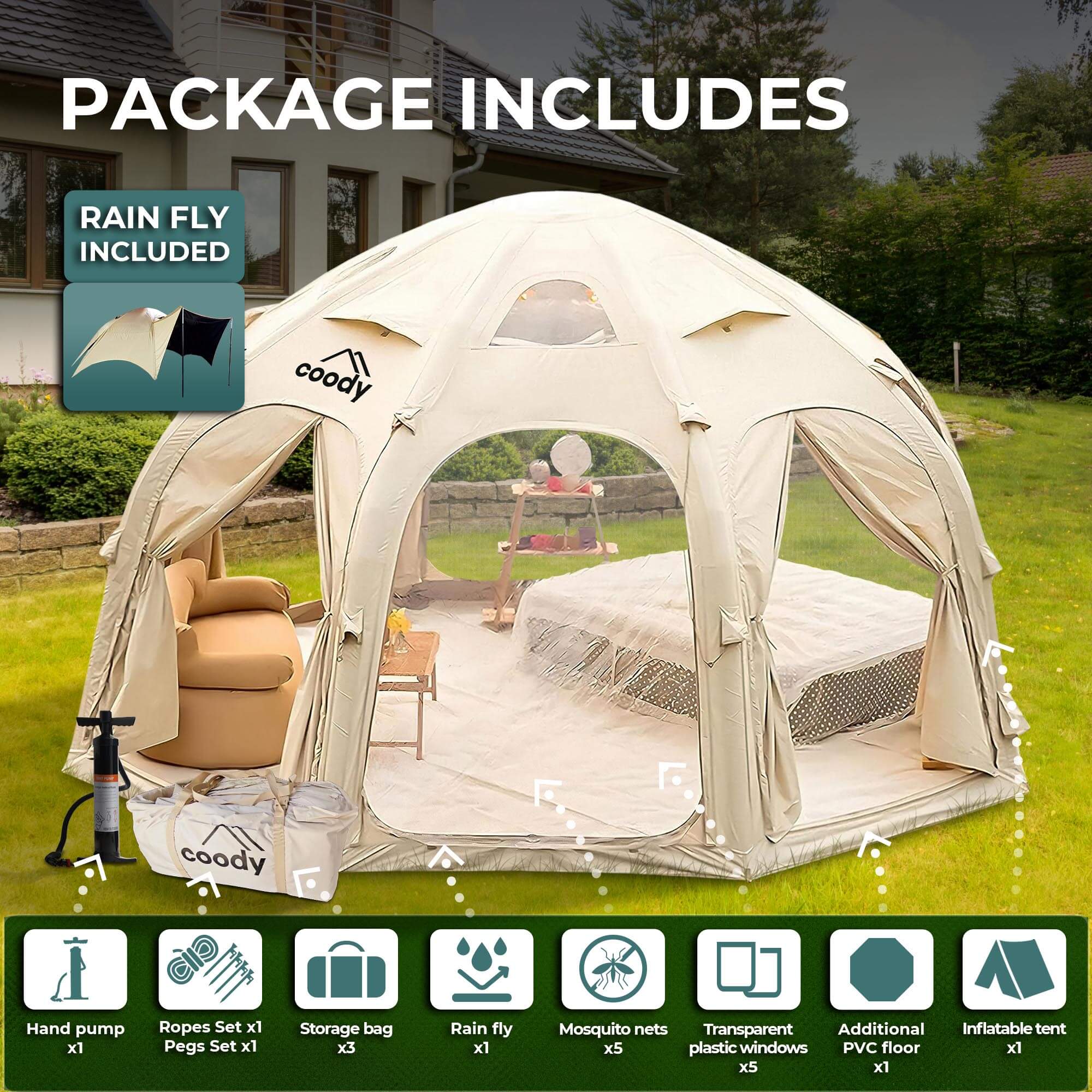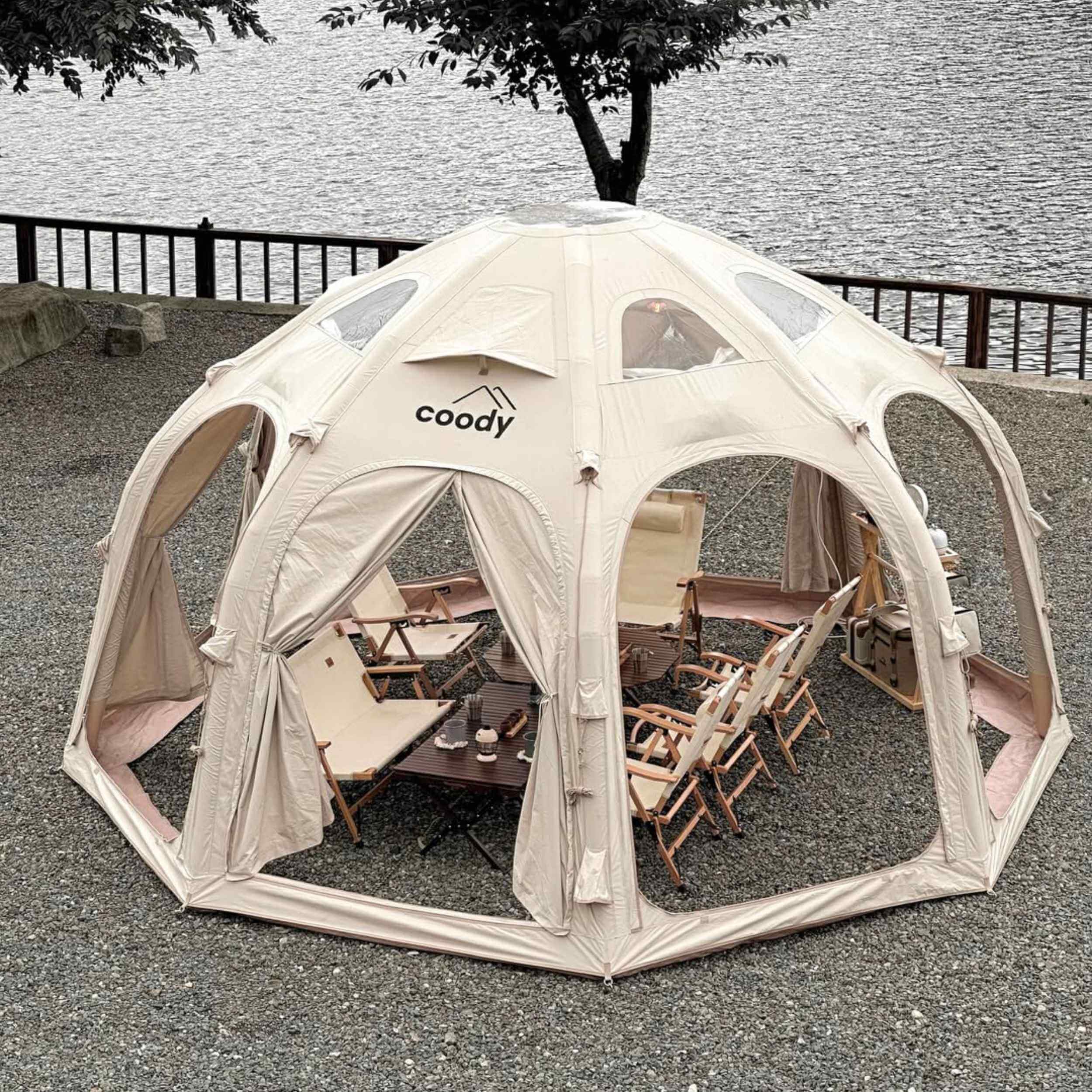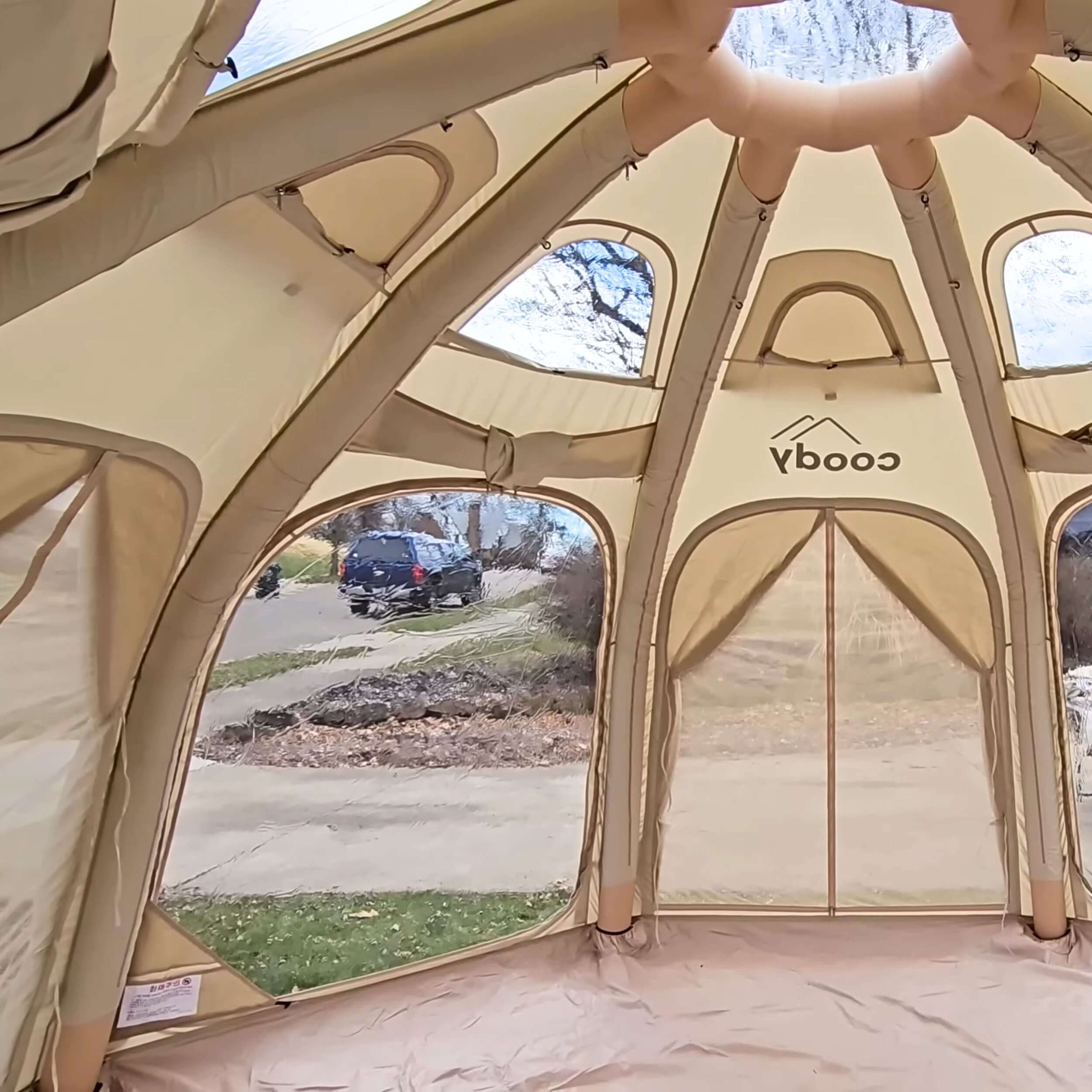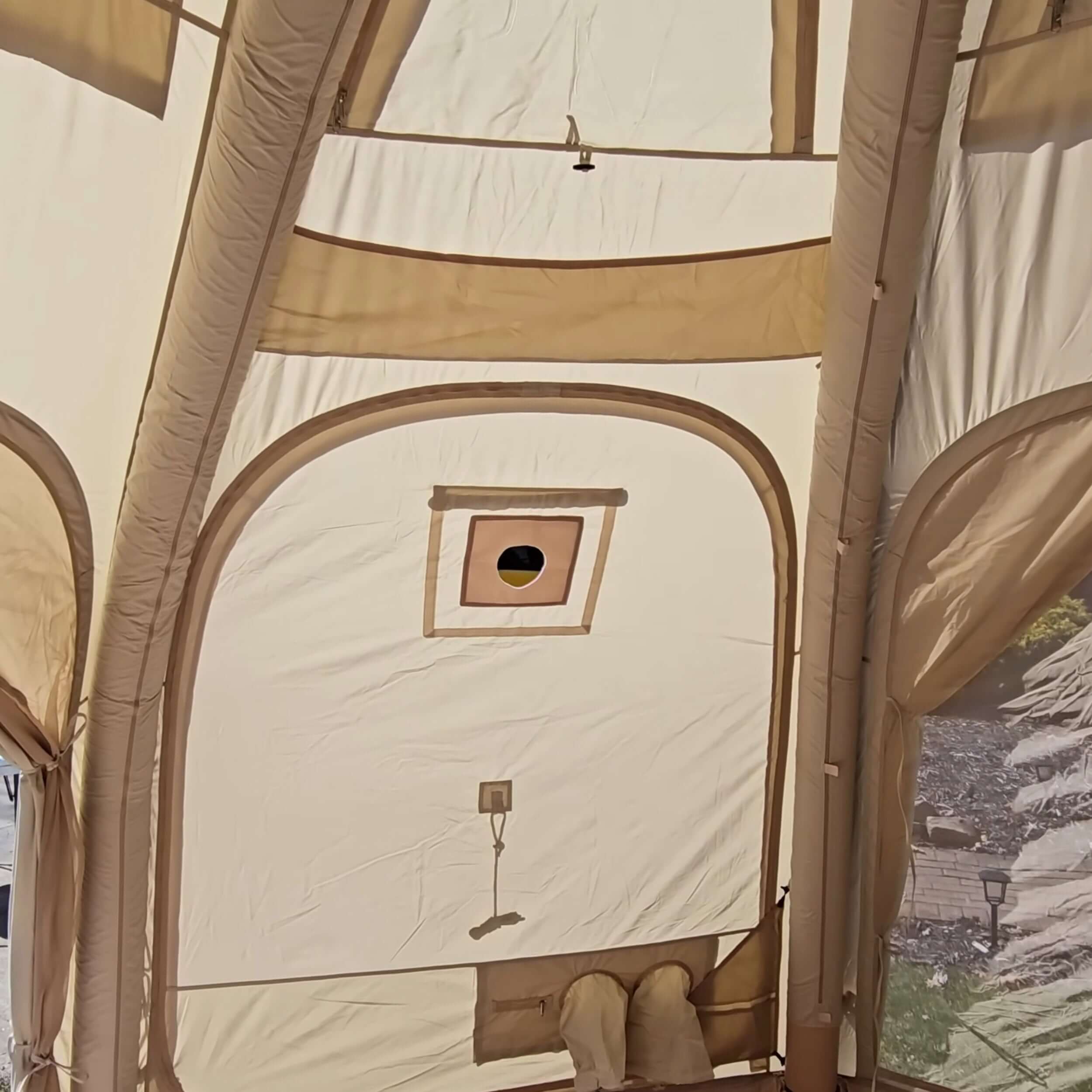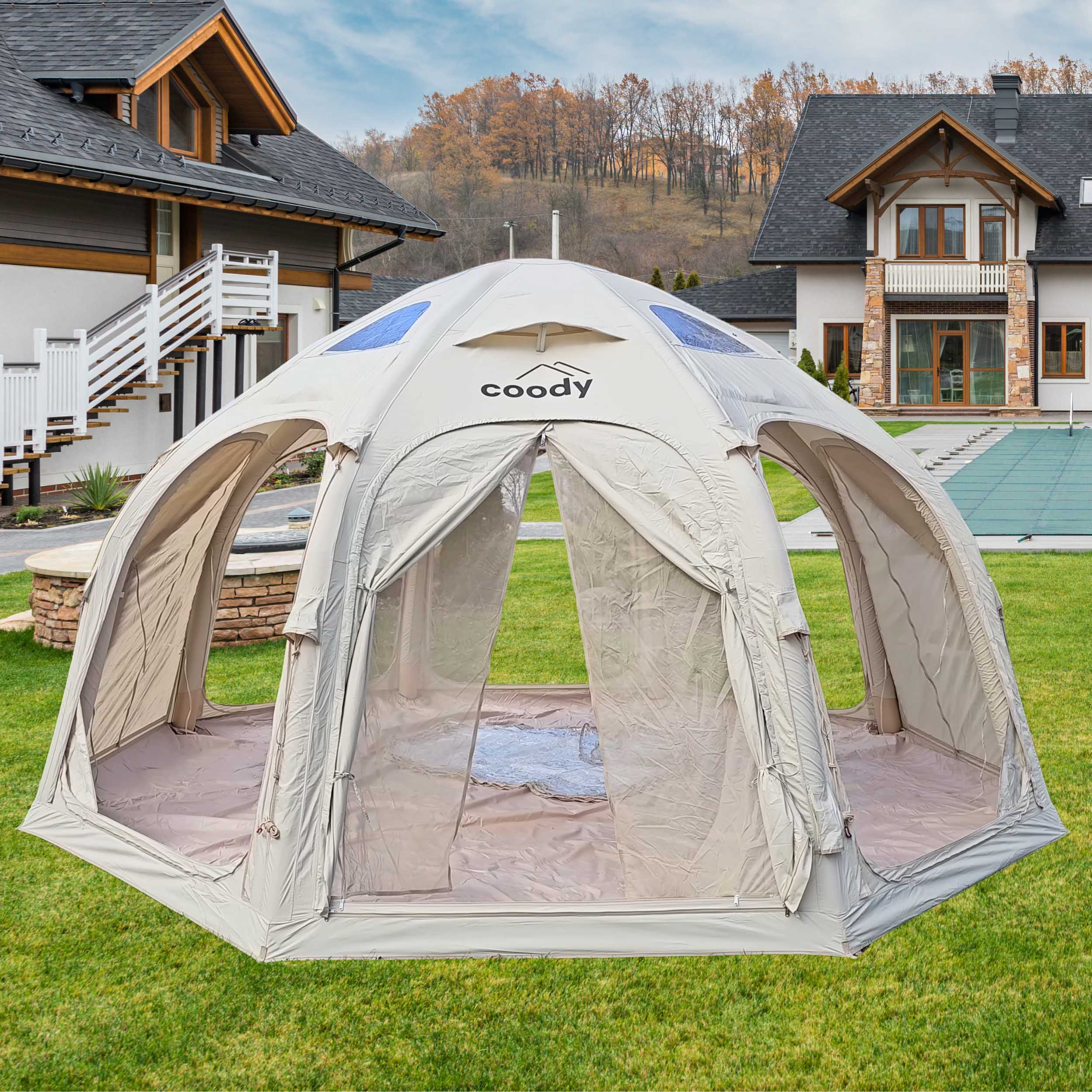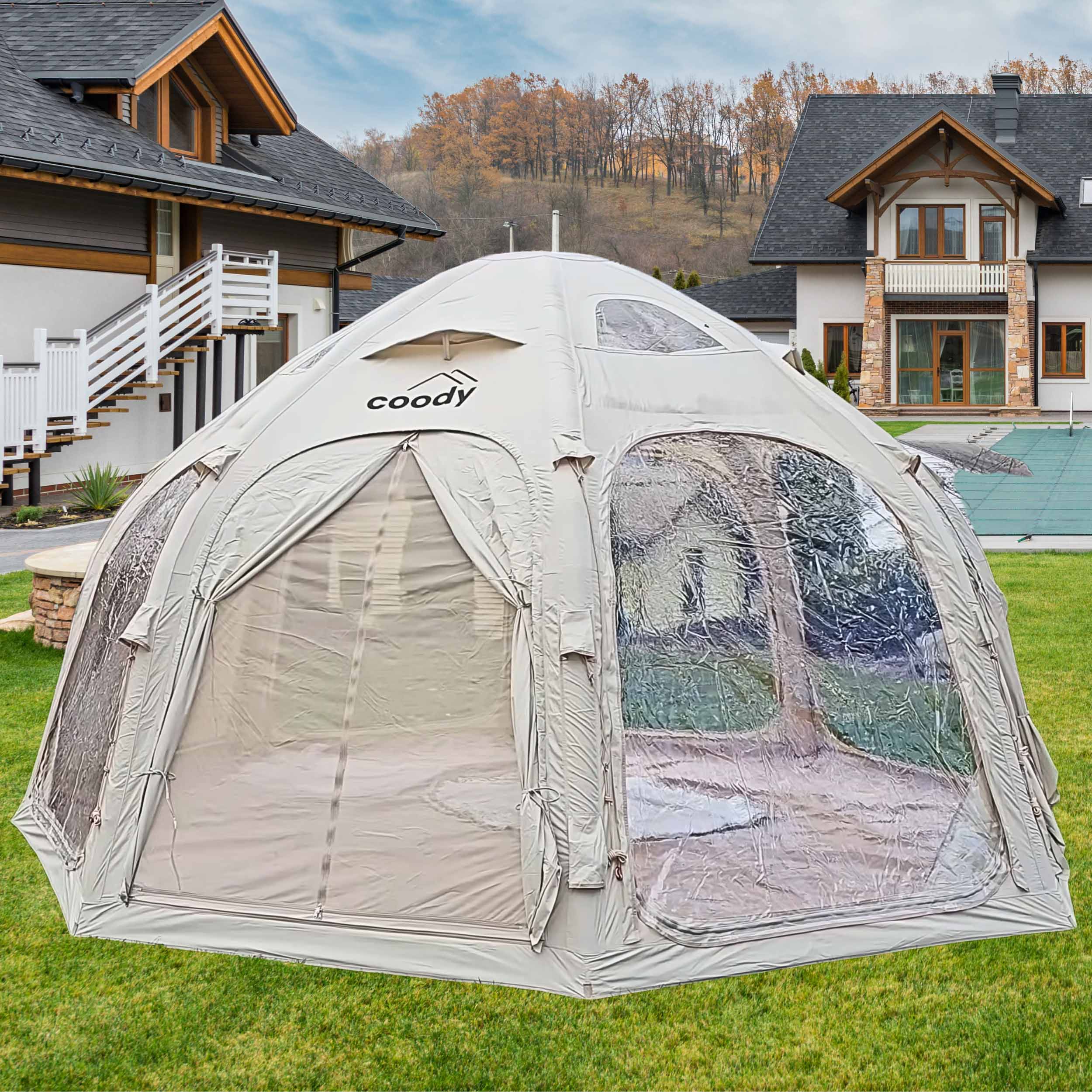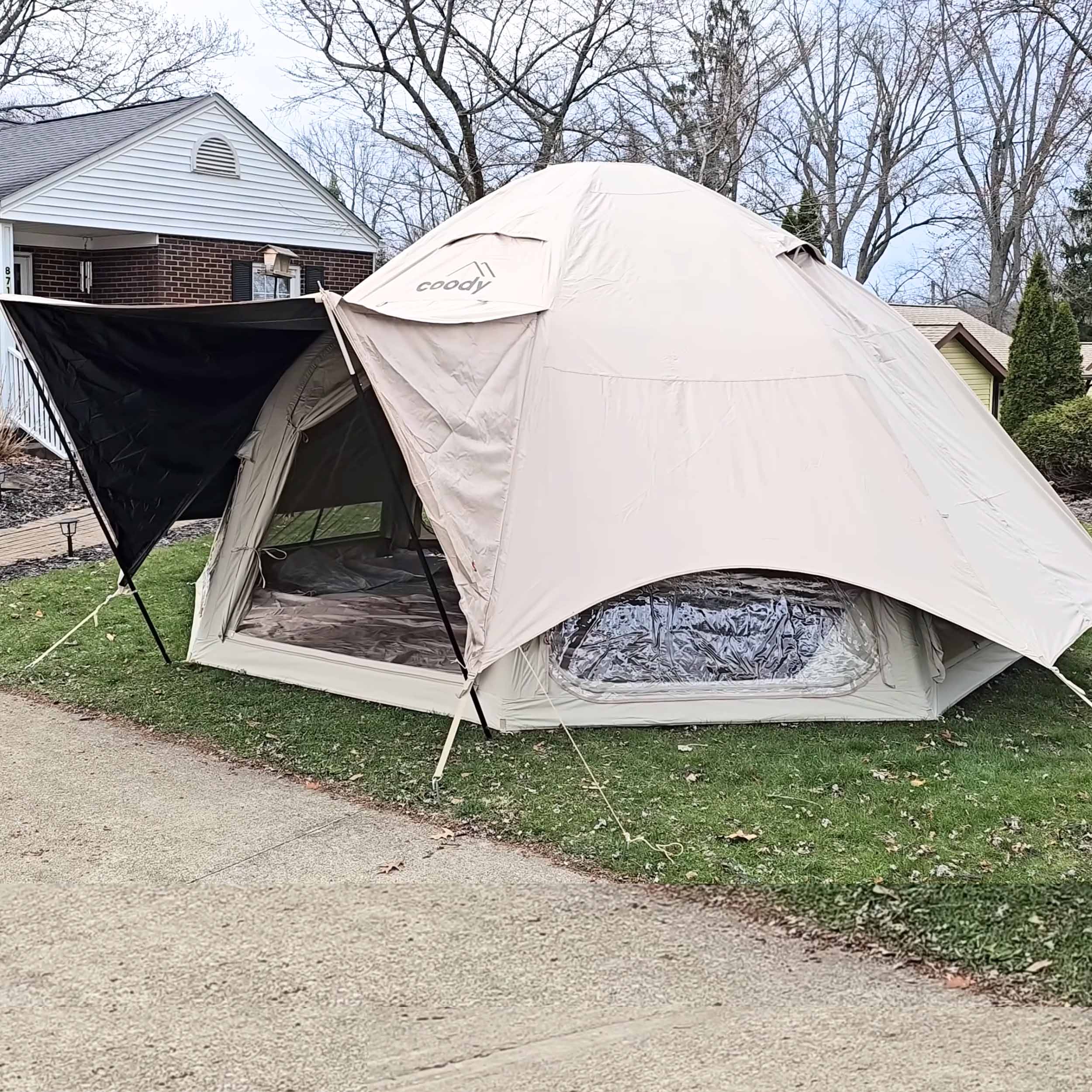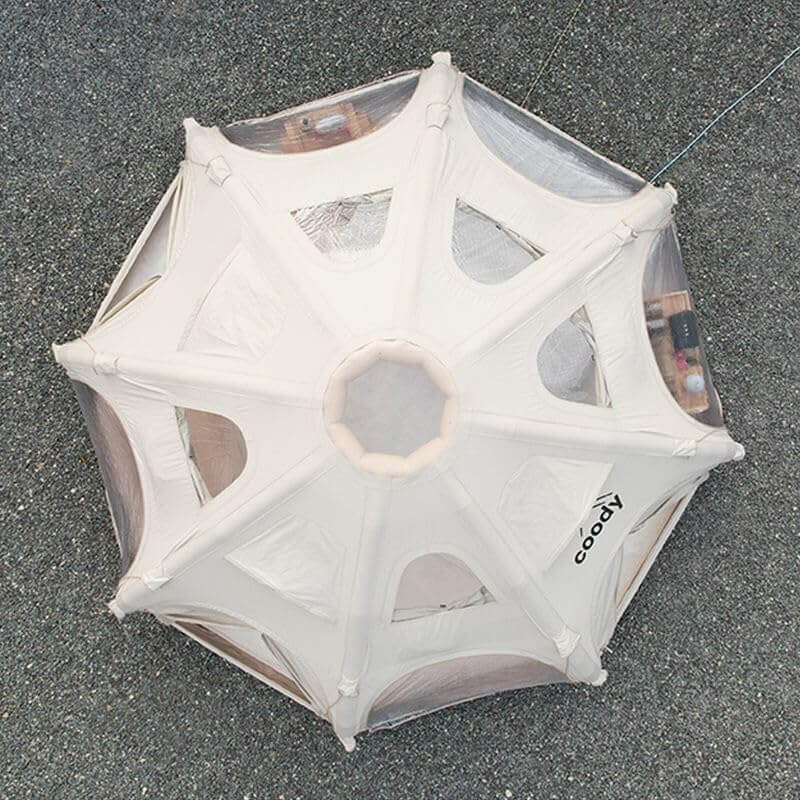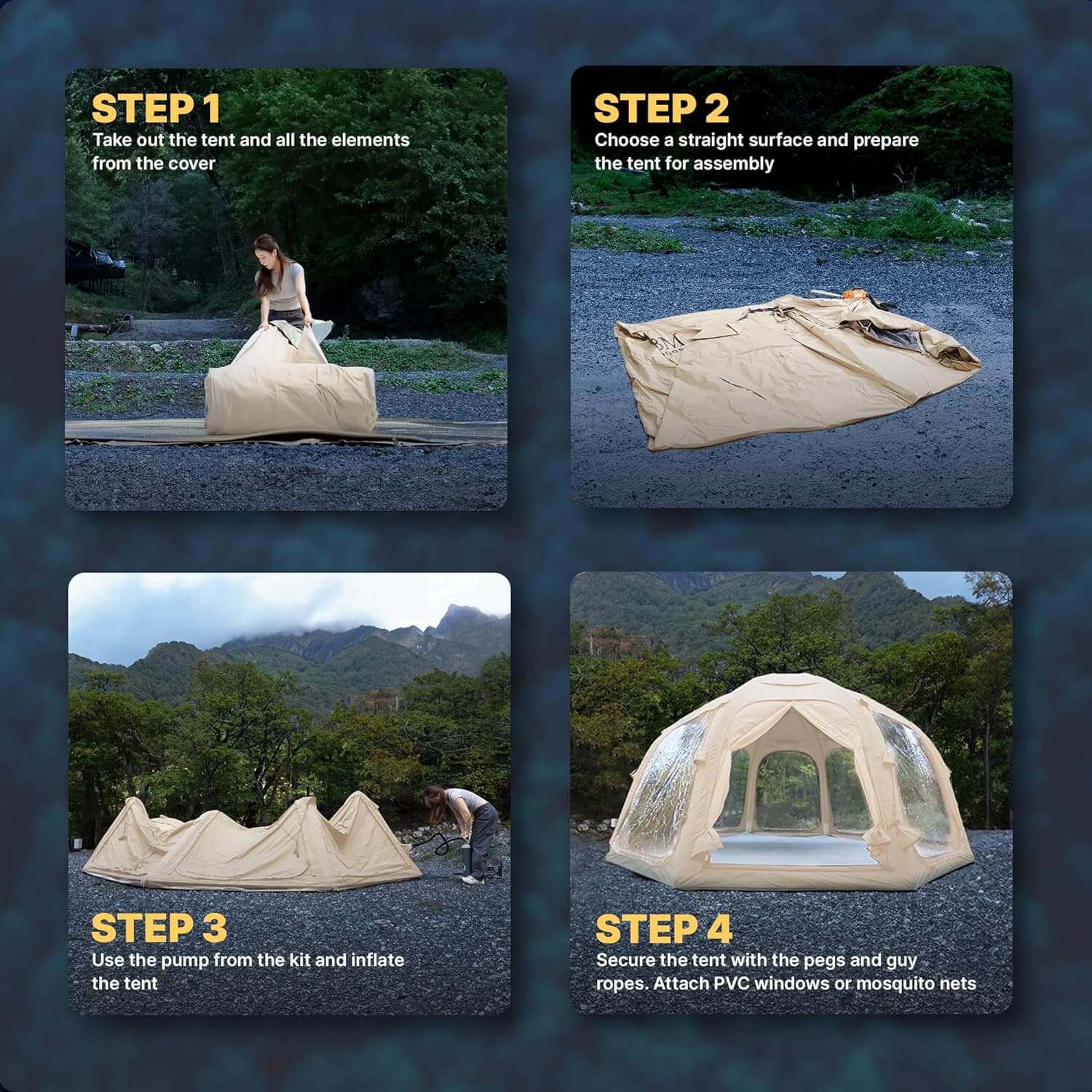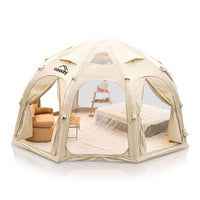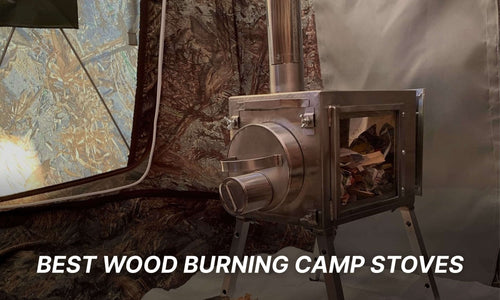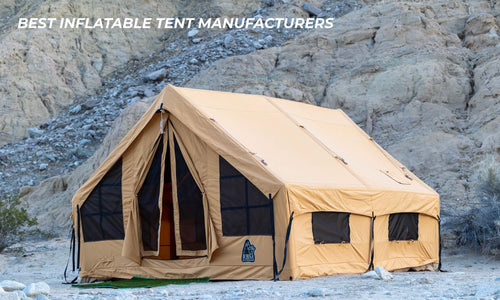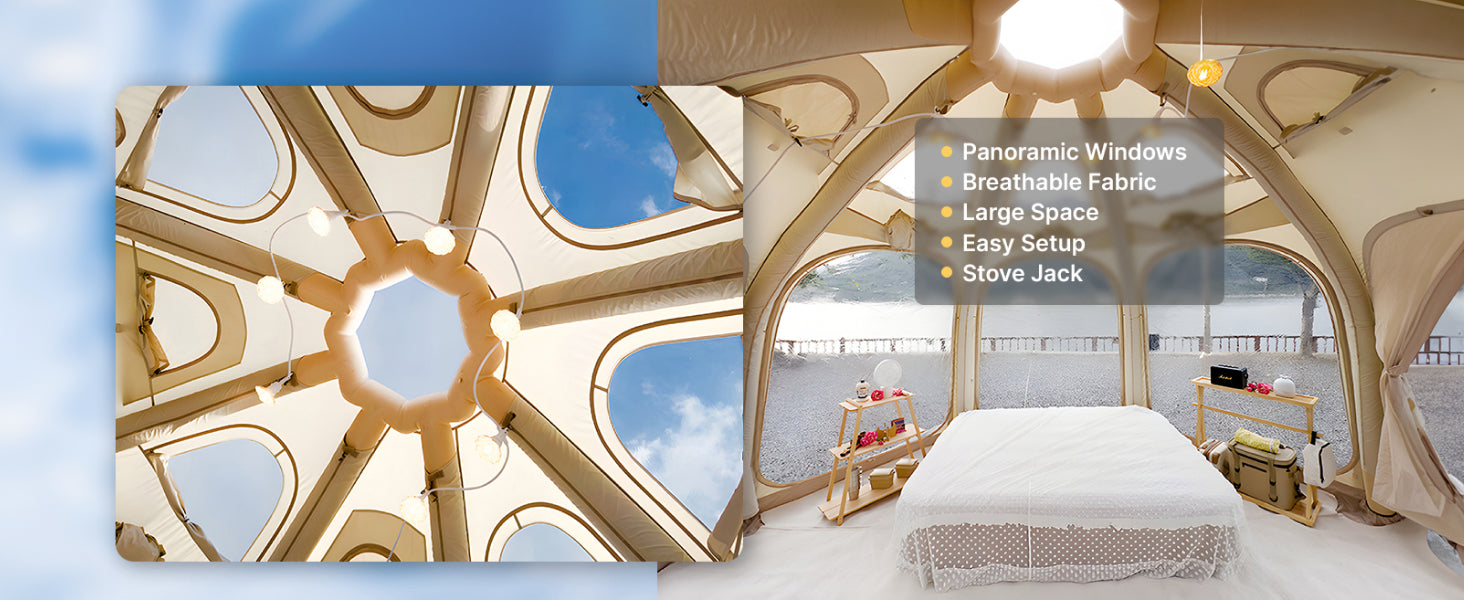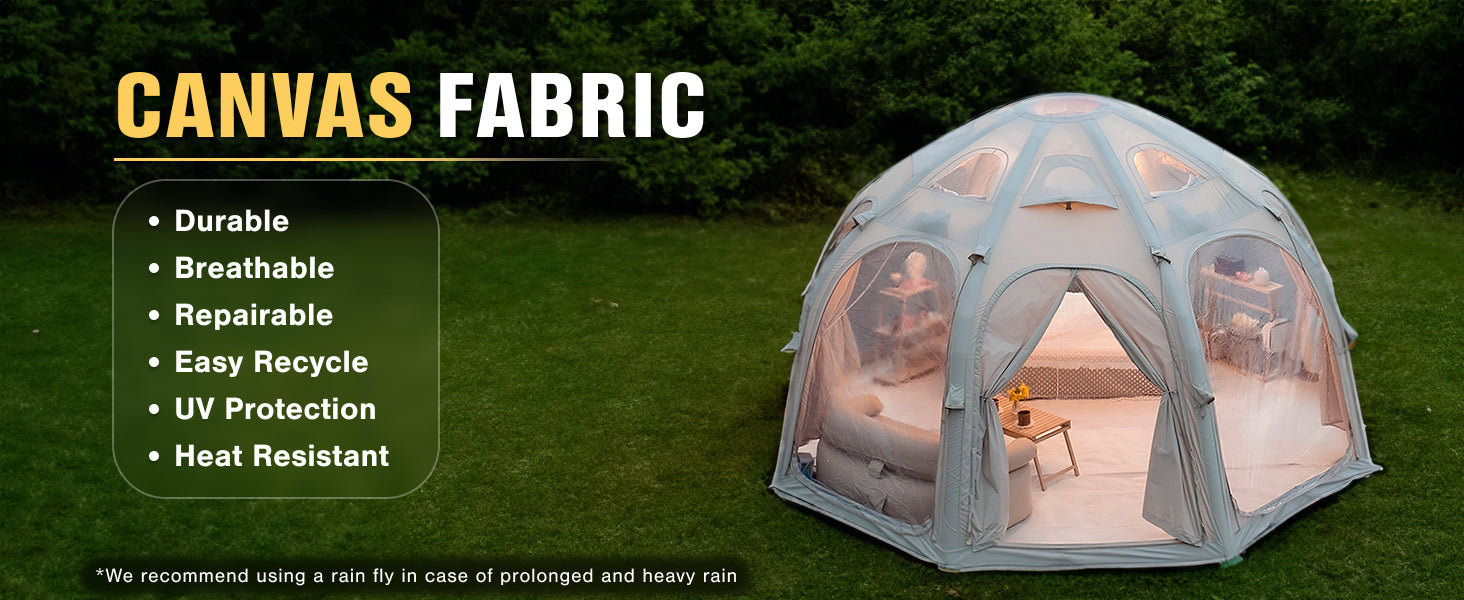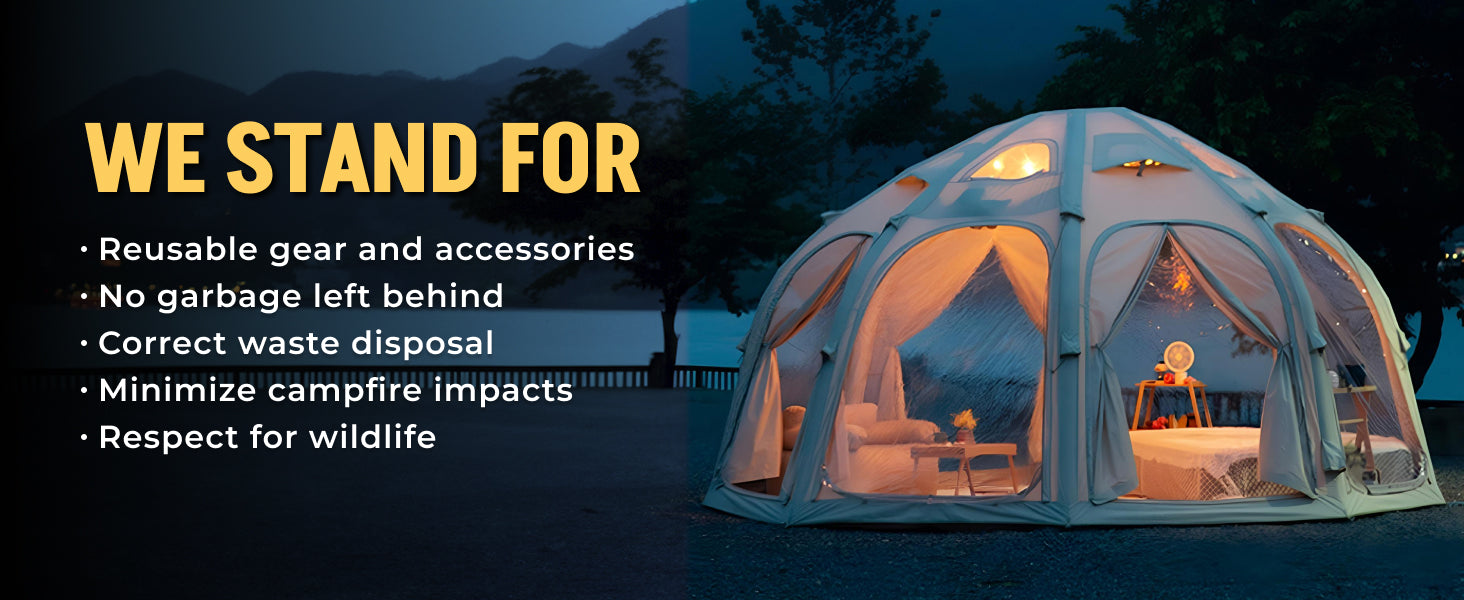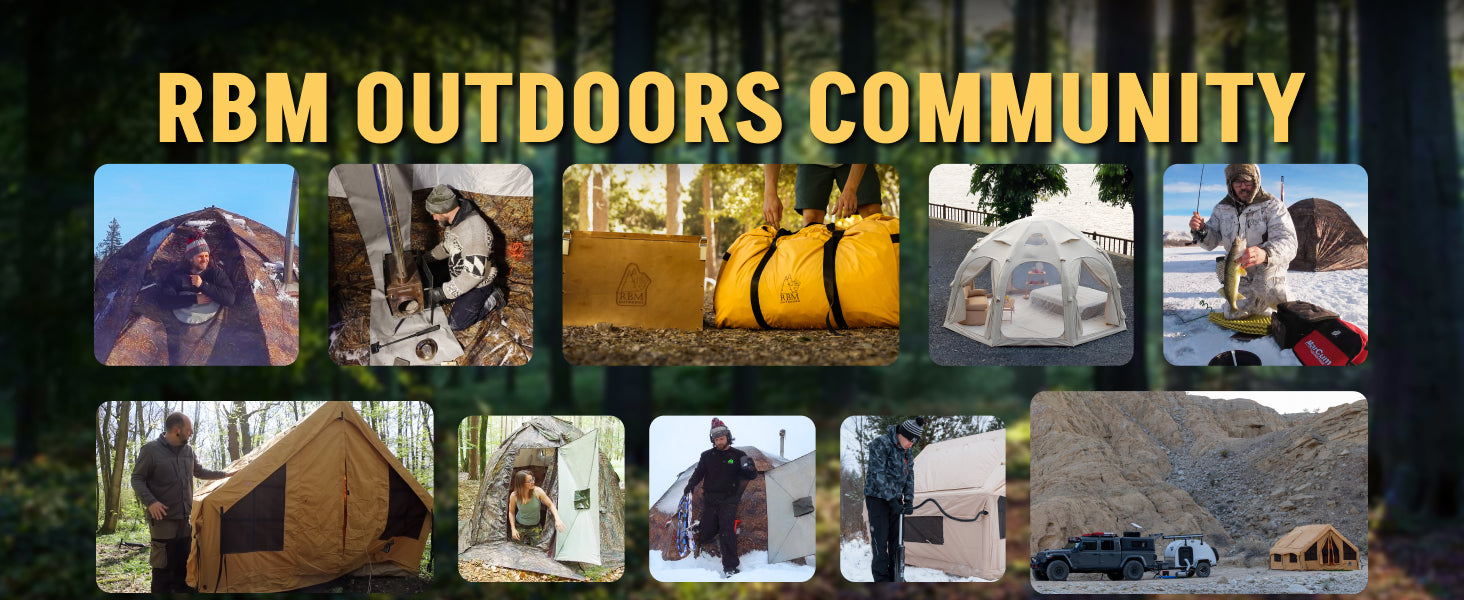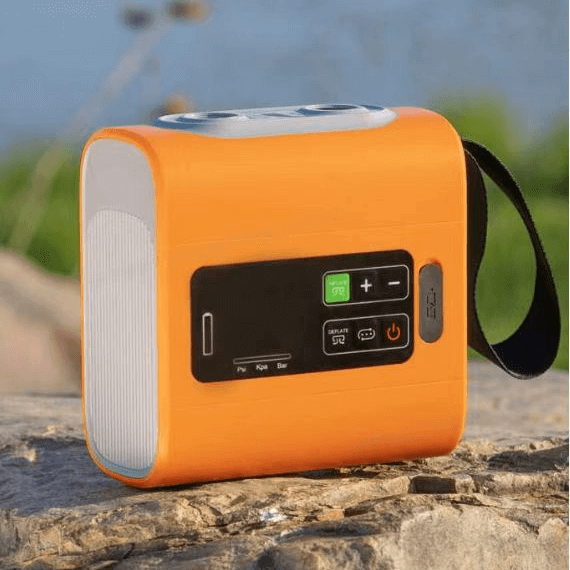Coody Dome | RBM Outdoors Octopus - Inflatable tent for 2-4 person (Beige)
Precautions raw: "User Manual for Inflatable Tents
⚒️ Preparation and Set Up
- Set up the tent on elevated ground, away from overhanging snow-laden trees and open flames.
- Aim to set up camp before dark.
- To keep the tent clean, we recommend using a groundsheet underneath.
- In strong winds, secure the tent with additional guy lines.
- Use the included rainfly to protect against rain, snow, and sunlight. If necessary, you can create an awning with poles (sold separately), though in this case only half of the tent will be covered.
🌡️ Temperature Range
- The tent can be used in outdoor temperatures from 5 °F to 104 °F.
- In cold weather, PVC materials become rigid — the floor and air beams stiffen, making folding more difficult. This is not a defect.
- For a comfortable sleep, use sleeping bags with the proper rating and insulated mats.
🔥 Heating & Insulation
- A dedicated chimney opening is provided for wood stoves. Always use stoves with a spark arrestor. Safe electric heaters are also acceptable. Open flames are prohibited.
- Maintain proper ventilation to prevent carbon monoxide buildup.
- If available, use the partition wall to help retain warmth in the sleeping area.
- Keep TPU windows closed to preserve heat, opening only for ventilation.
- Insulate the floor with rugs, blankets, or an additional liner.
💨 Air Pressure & Frame
- In freezing conditions, pressure inside the inflatable beams drops — check regularly and top up if needed.
- Ensure all valves are securely closed.
💧 Condensation & Moisture
Condensation is a natural process (similar to fogged car windows). The higher the fabric’s waterproofing, the more likely it is to occur.
Thanks to the breathable Terylene cotton, condensation inside our tents is minimal.
- – Keep vents slightly open.
- – Increase temperature gradually to avoid sudden heating.
- – Use a groundsheet under the tent.
- – Choose dry ground when possible.
- – Always dry the tent fully before packing.
🌧 Rain & Snow Protection
- In moderate rain, the tent protects against water for 4–5 hours (depending on intensity). In light or intermittent rain, the rainfly is not necessary.
- For prolonged rainfall, the included rainfly must be used.
- After rain, remove the rainfly to allow ventilation and prevent condensation.
- You may pre-attach or keep the rainfly rolled at the edge of the tent for quick use if extended showers are expected.
- In snowfall, always use the rainfly immediately. Snow accumulation on the fabric increases the risk of moisture penetration.
- Clear snow from the tent roof regularly.
- If zippers freeze, warm them with your hands or water — never force them.
- After winter use, thoroughly dry the tent before storage.
📦 Packing & Storage
- Remember: in cold weather, the PVC floor and fabric stiffen and fold less easily.
- Fully deflate the tent before packing.
- Dry in a well-ventilated place and store only when completely dry.
🧹 Care and Use
- Avoid wearing shoes inside the tent.
- Keep sharp objects away from the floor and walls.
- Protect from flammable substances and acids.
- Maintain cleanliness: mold and prolonged UV exposure reduce lifespan.
- Avoid extended direct sunlight; use the rainfly when needed.
⚠️ Fire Safety
- Exercise caution with electrical appliances.
- Keep exits clear for emergency use.
- Keep a fire extinguisher or other firefighting tool nearby.
- Do not allow children to play with fireworks near the tent.
Precautions value: "User Manual for Inflatable Tents
⚒️ Preparation and Set Up
- Set up the tent on elevated ground, away from overhanging snow-laden trees and open flames.
- Aim to set up camp before dark.
- To keep the tent clean, we recommend using a groundsheet underneath.
- In strong winds, secure the tent with additional guy lines.
- Use the included rainfly to protect against rain, snow, and sunlight. If necessary, you can create an awning with poles (sold separately), though in this case only half of the tent will be covered.
🌡️ Temperature Range
- The tent can be used in outdoor temperatures from 5 °F to 104 °F.
- In cold weather, PVC materials become rigid — the floor and air beams stiffen, making folding more difficult. This is not a defect.
- For a comfortable sleep, use sleeping bags with the proper rating and insulated mats.
🔥 Heating & Insulation
- A dedicated chimney opening is provided for wood stoves. Always use stoves with a spark arrestor. Safe electric heaters are also acceptable. Open flames are prohibited.
- Maintain proper ventilation to prevent carbon monoxide buildup.
- If available, use the partition wall to help retain warmth in the sleeping area.
- Keep TPU windows closed to preserve heat, opening only for ventilation.
- Insulate the floor with rugs, blankets, or an additional liner.
💨 Air Pressure & Frame
- In freezing conditions, pressure inside the inflatable beams drops — check regularly and top up if needed.
- Ensure all valves are securely closed.
💧 Condensation & Moisture
Condensation is a natural process (similar to fogged car windows). The higher the fabric’s waterproofing, the more likely it is to occur.
Thanks to the breathable Terylene cotton, condensation inside our tents is minimal.
- – Keep vents slightly open.
- – Increase temperature gradually to avoid sudden heating.
- – Use a groundsheet under the tent.
- – Choose dry ground when possible.
- – Always dry the tent fully before packing.
🌧 Rain & Snow Protection
- In moderate rain, the tent protects against water for 4–5 hours (depending on intensity). In light or intermittent rain, the rainfly is not necessary.
- For prolonged rainfall, the included rainfly must be used.
- After rain, remove the rainfly to allow ventilation and prevent condensation.
- You may pre-attach or keep the rainfly rolled at the edge of the tent for quick use if extended showers are expected.
- In snowfall, always use the rainfly immediately. Snow accumulation on the fabric increases the risk of moisture penetration.
- Clear snow from the tent roof regularly.
- If zippers freeze, warm them with your hands or water — never force them.
- After winter use, thoroughly dry the tent before storage.
📦 Packing & Storage
- Remember: in cold weather, the PVC floor and fabric stiffen and fold less easily.
- Fully deflate the tent before packing.
- Dry in a well-ventilated place and store only when completely dry.
🧹 Care and Use
- Avoid wearing shoes inside the tent.
- Keep sharp objects away from the floor and walls.
- Protect from flammable substances and acids.
- Maintain cleanliness: mold and prolonged UV exposure reduce lifespan.
- Avoid extended direct sunlight; use the rainfly when needed.
⚠️ Fire Safety
- Exercise caution with electrical appliances.
- Keep exits clear for emergency use.
- Keep a fire extinguisher or other firefighting tool nearby.
- Do not allow children to play with fireworks near the tent.
Width - 5 m (197")
Length - 5 m (197")
Height - 2,4 m (96")
Net weight - 70,76 kg (156.00 lb)
Gross weight - 73,48 kg (162.00 lb)
Dimension packaging:
3 boxes
34.7 x 20.1 x 20.1 in; 111.6 lb
24.0 x 10.3 x 9.8 in; 36.6 lb
27.6 x 9.5 x 9.5 in; 22.3 lb
Included Components:
Tent,
Rain Fly,
Hand Air Pump,
PVC Floor,
5 Windows Mosquito Nets,
5 TPU Windows Attachments,
Ropes,
Pegs,
Storage Bag
User Manual for Inflatable Tents
⚒️ Preparation and Set Up
- Set up the tent on elevated ground, away from overhanging snow-laden trees and open flames.
- Aim to set up camp before dark.
- To keep the tent clean, we recommend using a groundsheet underneath.
- In strong winds, secure the tent with additional guy lines.
- Use the included rainfly to protect against rain, snow, and sunlight. If necessary, you can create an awning with poles (sold separately), though in this case only half of the tent will be covered.
🌡️ Temperature Range
- The tent can be used in outdoor temperatures from 5 °F to 104 °F.
- In cold weather, PVC materials become rigid — the floor and air beams stiffen, making folding more difficult. This is not a defect.
- For a comfortable sleep, use sleeping bags with the proper rating and insulated mats.
🔥 Heating & Insulation
- A dedicated chimney opening is provided for wood stoves. Always use stoves with a spark arrestor. Safe electric heaters are also acceptable. Open flames are prohibited.
- Maintain proper ventilation to prevent carbon monoxide buildup.
- If available, use the partition wall to help retain warmth in the sleeping area.
- Keep TPU windows closed to preserve heat, opening only for ventilation.
- Insulate the floor with rugs, blankets, or an additional liner.
💨 Air Pressure & Frame
- In freezing conditions, pressure inside the inflatable beams drops — check regularly and top up if needed.
- Ensure all valves are securely closed.
💧 Condensation & Moisture
Condensation is a natural process (similar to fogged car windows). The higher the fabric’s waterproofing, the more likely it is to occur.
Thanks to the breathable Terylene cotton, condensation inside our tents is minimal.
- – Keep vents slightly open.
- – Increase temperature gradually to avoid sudden heating.
- – Use a groundsheet under the tent.
- – Choose dry ground when possible.
- – Always dry the tent fully before packing.
🌧 Rain & Snow Protection
- In moderate rain, the tent protects against water for 4–5 hours (depending on intensity). In light or intermittent rain, the rainfly is not necessary.
- For prolonged rainfall, the included rainfly must be used.
- After rain, remove the rainfly to allow ventilation and prevent condensation.
- You may pre-attach or keep the rainfly rolled at the edge of the tent for quick use if extended showers are expected.
- In snowfall, always use the rainfly immediately. Snow accumulation on the fabric increases the risk of moisture penetration.
- Clear snow from the tent roof regularly.
- If zippers freeze, warm them with your hands or water — never force them.
- After winter use, thoroughly dry the tent before storage.
📦 Packing & Storage
- Remember: in cold weather, the PVC floor and fabric stiffen and fold less easily.
- Fully deflate the tent before packing.
- Dry in a well-ventilated place and store only when completely dry.
🧹 Care and Use
- Avoid wearing shoes inside the tent.
- Keep sharp objects away from the floor and walls.
- Protect from flammable substances and acids.
- Maintain cleanliness: mold and prolonged UV exposure reduce lifespan.
- Avoid extended direct sunlight; use the rainfly when needed.
⚠️ Fire Safety
- Exercise caution with electrical appliances.
- Keep exits clear for emergency use.
- Keep a fire extinguisher or other firefighting tool nearby.
- Do not allow children to play with fireworks near the tent.
Capacity - up to 4 (4 in sleeping bags)
Seasons - Four-season tent (not lower than 0 °C (32°F))
Tent color - Forest Green
Tent material -Canvas: 210 gsm TC fabric, eco-friendly and breathable (65% polyester / 35% cotton)
Floor material - Oxford, removable
Air tube material - PVC
Number of windows - 5
Number of doors - 3
Stove jack diameter - 10 cm (3.93")
Air pump type - Hand pump
Recommended pressure - 6-8 psi
Warranty - 1 year
SEE MORE, BE MORE: DIVE INTO 360° VIEWS WITH OCTOPUS
Octopus tent is a head-turner at any campsite or backyard bash!
ALL-IN-ONE GENIUS
Your go-to for all adventures, parties, and cozy nights under the stars.
Go from camping to glamping or turn your garden into party central.
DURABLE COTTON & WEATHER-READY
✓ 3 doors
✓ 5 windows
✓ stove jack
✓ canvas construction withstands rains and winds
* For those rainy days, don't forget to use the included rain fly to keep cozy and dry!
SET UP IN A SNAP:
Inflates in 9 minutes without the need for metal poles.
"A Breeze to Fix for Many More Adventures!"


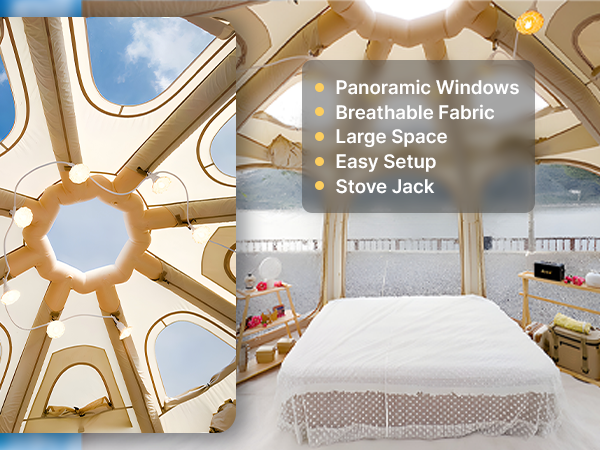
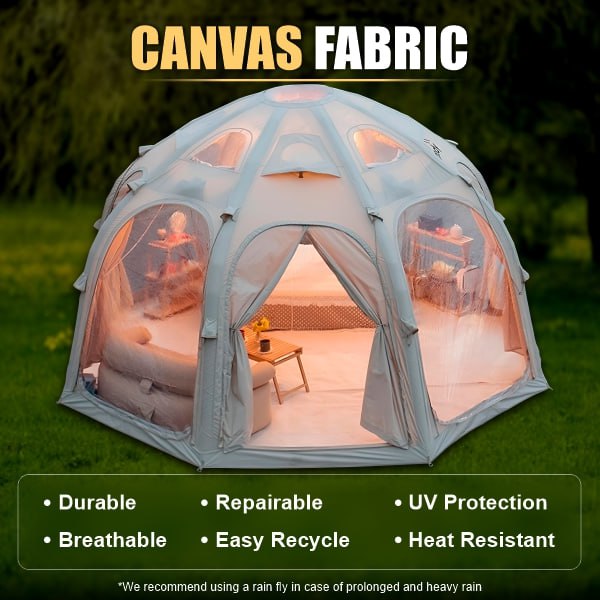
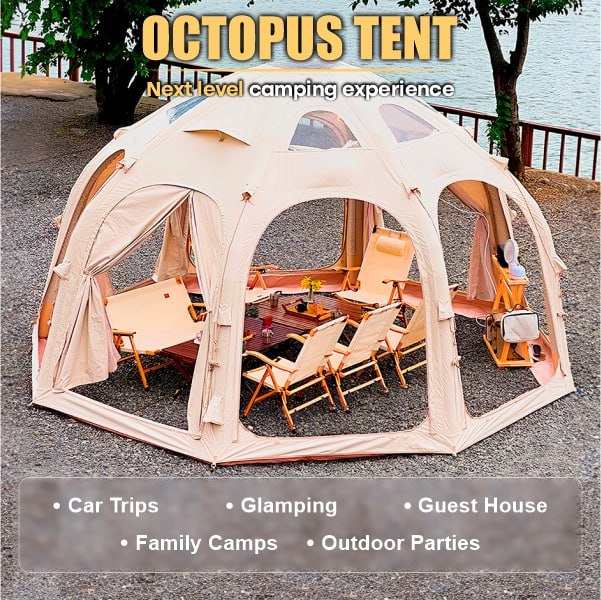








Expert Video Reviews
Independent experts test our tents in real conditions, highlight the benefits, and answer your key questions before you buy.

